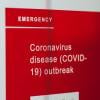Related Content
 |
3 Critical Considerations for Technical Due Diligence Technical due diligence is the process of verifying a company’s technical capabilities, quality, and processes. It is typically performed by investors or buyers before a contract. There are many aspects you can investigate, but three are crucial: a code review, security evaluation, and open source components compliance. |
|
 |
Ditch Your Logs for Better Monitoring Metrics Many teams use logs to track the behavior of applications, services, or platforms. But how actionable is that log data? There are better ways to parse that information and make it more visible, more useful, and easier to understand. Try converting your logs into metrics for a faster and more lightweight monitoring system. |
|
 |
Testing in the Dark Requirements only go so far in identifying areas to test. Sometimes testers are given no information at all, leaving it up to them to determine what to test. Don’t accept the need to indiscriminately test with no clear understanding. Your testing should be targeted, and these techniques will help focus your test effort. |
|
 |
Lessons the Software Community Must Take from the Pandemic Due to COVID-19, organizations of all types have had to implement continuity plans within an unreasonably short amount of time. These live experiments in agility have shaken up our industry, but it's also taught us a lot of invaluable lessons about digital transformation, cybersecurity, performance engineering, and more. |
|
 |
Choosing the Right Threat Modeling Methodology Threat modeling has transitioned from a theoretical concept into an IT security best practice. Choosing the right methodology is a combination of finding what works for your SDLC maturity and ensuring it results in the desired outputs. Let’s look at four different methodologies and assess their strengths and weaknesses. |
|
 |
3 Software Testing Lessons from an Unlikely Source With people trying to stay isolated as much as possible due to COVID-19, going to the grocery store suddenly became something to strategize. At least making a plan, prioritizing risk, and being agile are business as usual for software testers. Here are some of the top lessons testers can learn from our current situation. |
|
 |
Defensive Design Strategies to Prevent Flaky Tests Flaky tests could be the result of issues in the code, but more often they are due to assumptions in the test code that lead to non-relatable results. There are many reasons that tests can fail intermittently, and some can be easily avoided by applying good defensive design strategies. It's all about making your code agile. |
|
 |
Shifting Security Left in Your Continuous Testing Pipeline Security is often the black sheep of testing—an afterthought that gets only a scan before release. We have to make security a first-class testing citizen with full-lifecycle support. For the best impact, introduce security testing into the early phases of the continuous testing pipeline. Here are some tools to help. |








